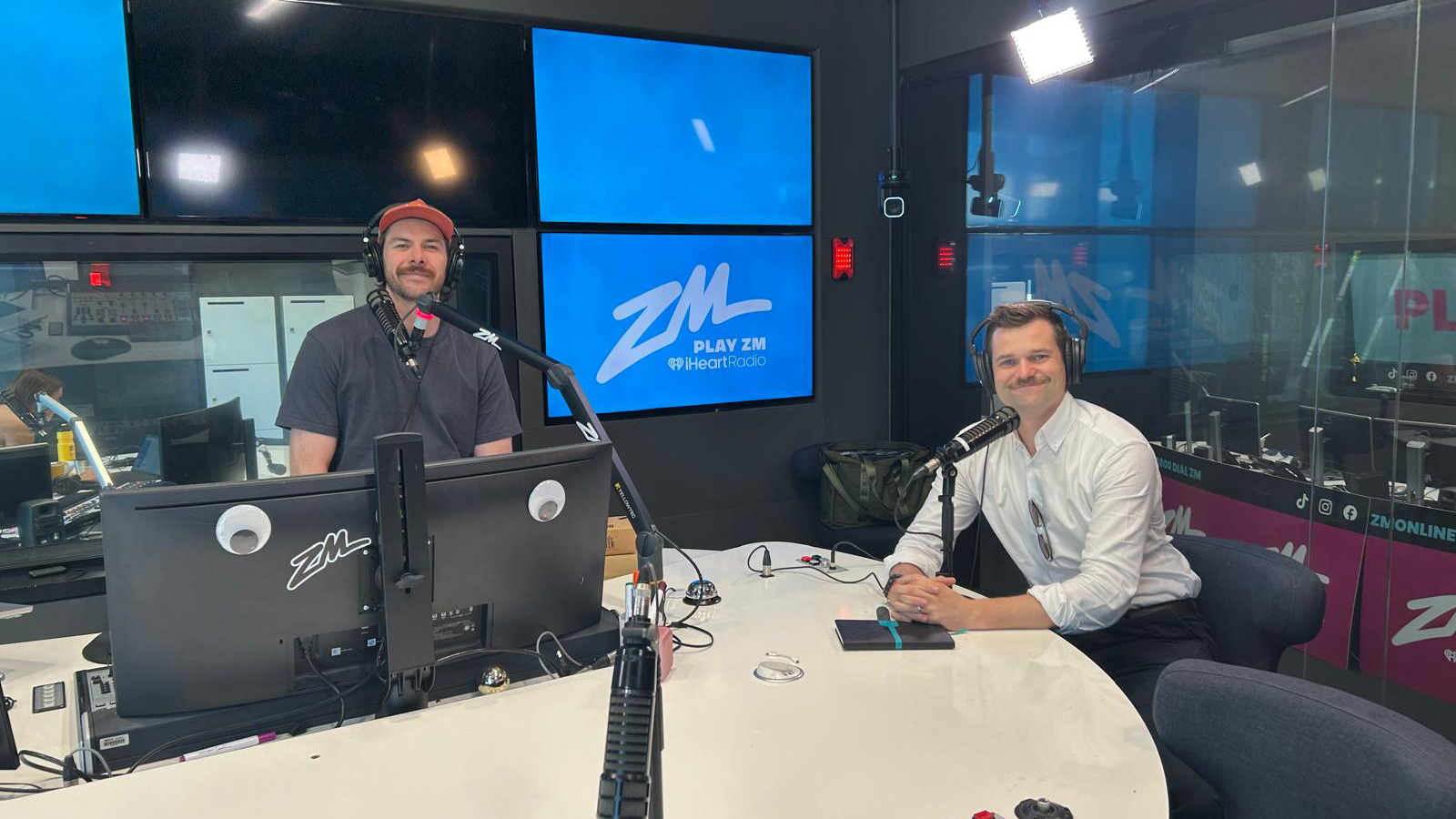Oil is the commodity with the largest impact on inflation and day-to-day living costs. With war in the Middle East driving oil prices higher, what does this mean for the world economy? Milford Senior Investment Analyst Andrew Curtayne talks with Ryan Bridge about the current geopolitical situation, including the war in Ukraine and the global impact of China’s economic stimulus measures.
Listen.
Listen to the podcast on your favourite platform:
Read.
Bridge talks Business: 15 October 2024
Episode Transcript
Ryan Bridge
Kia ora, I’m Ryan Bridge. Welcome to episode 10 of Bridge talks Business with Milford. This week – oil. Like it or loathe it, the world is heavily reliant on black gold to power our economies and get our goods to market. Today, war in the Middle East is driving prices up. We’re asking Milford’s Andrew Curtayne how high, what about supply, and could this spike ignite another inflation story just as we are getting good news on that front? Before all of that, though, here are your top five business bits from the week that was.
1. A double, double whammy. The Reserve Bank slashed half a percent off the OCR last week showing confidence inflation is coming under control. Could they go another half a percent next month? Talk of interest rates remaining restrictive certainly opens the door to that one.
2. That cut sent the Kiwi dollar lower, while the NZX 50 share index rallied a couple of percent. All eyes now turning to quarter three inflation data.
3. China’s taking more steps to help its ailing property sector and wider economy, with further measures announced over the weekend. So far, short on detail but expected to be long on recovery.
4. Can the Fed cut hard and fast given the new US inflation data? It came in stronger than expected. The market is taking note. Bond yields up sharply over the last few weeks.
5. This week investors will start to focus on the micro part of the US economy, with quarterly earnings announced. Don’t expect much in the way of guidance with that big US election looming less than a month away.
The past few years have been a hard slog, let’s be honest. We’ve all felt that right, but just recently the Reserve Bank has told us inflation is coming under control. We are getting inside the target range. We can all breathe a sigh of relief and then BAM! Commodity prices start increasing. Oil, copper, iron ore all going up off the back of war in the Middle East, and also a slowing economy in China. So, what does that mean for us? What does it mean for our inflation targets? I’m delighted to have back on the podcast Andrew Curtayne, who is a Senior Analyst at Milford. Andrew, welcome back.
Andrew Curtayne
Thanks very much, it’s good to be back here.
Ryan Bridge
Good to see you. Just a note that this is intended as informational only and should not be considered as financial advice. So, let’s talk commodities. What exactly is going up, or has been going up, in the past month?
Andrew Curtayne
We’ve seen a really big rally in oil price. That’s gone up about 17-18% over the last four weeks or so. We’ve seen copper and iron ore rally by about 20% each. Now what we’re seeing is stuff that’s linked to the Chinese economy is rallying. So, stuff that’s more cyclically exposed and would perform better if the Chinese economy is stronger. And we’re also seeing oil go up because oil has got a risk premium built into it related to the war in the Middle West.
Ryan Bridge
The war in the Middle East has been going on for a year now. What’s happened in the last month? Is it the escalation obviously, the connection with Iran?
Andrew Curtayne
It’s the escalation we’ve had. Obviously Hezbollah has been dragged into the war. Israel has been very aggressively sending missiles into Lebanon. But the key thing is we’ve seen a retaliation from Iran to Israel where they sent through a bunch of missiles on the 1st of October. And a few of those missiles got through and actually landed on targets in Israel. Now, Israel came out and said very strongly, “We’re going to retaliate”. And by retaliate that could mean quite a broad spectrum of things. At one end, and the most concerning, would be they decide to hit nuclear facilities where Iran is conducting research of enriching uranium and potentially being able to build a nuclear warhead. That would be the most concerning attack. Then you could have an attack which would involve hitting oil infrastructure because Iran is one of the larger producers of oil in the world. It produces around about 4 million barrels of oil a day and it exports around about 1.5 to 2 million barrels a day. Now if it hit oil infrastructure, this would have a material impact on the world’s oil supply. It could cause oil price to go a lot higher. And then lastly, there’s some slightly less severe options which would involve attacking military targets. So, while obviously this is still going to be war and it’s still going to be aggressive, it’s not going to directly impact oil sites on nuclear facilities.
Ryan Bridge
Yeah, and obviously everything we’re discussing has implications for human lives, etc. And those notwithstanding, I’m really interested in what it’s going to do to the price of oil to commodities. So, in some ways, from a financial perspective, from a global economy perspective, would it be better that they hit the uranium enrichment facilities as opposed to the oil infrastructure?
Andrew Curtayne
Yeah, that’s quite a difficult question. I’m probably going to say hitting nuclear facilities is just not a good thing at all. Who knows what will happen there. And by the way, I think that’s quite an unlikely outcome. President Biden has been extremely clear he does not want attacks on nuclear sites. And Israel was quite reliant on support from the US, so they do not want to annoy the US.
In terms of economic outcomes, I guess attacks on oil is going to have some sort of economic impact. If we get a situation where, for example, Iran is unable to export that one and a half to two million barrels a day, that’s about 2% of the world’s oil supply. Doesn’t sound like much, but a 2% reduction could cause oil prices jump probably another $15, $20 from here. So, we’ve seen oil already go from about $70 to $80. We’re traced a little bit now, but maybe we see oil go to $90 or $100. And it doesn’t sound like a huge amount, but that’s a 30% increase, and that’s going to flow through to all the costs for transportation. Oil is used in a lot of production and manufacturing facilities and all that. So, it does sort of slow down the economy a little bit, but it might just be temporarily. So we don’t need to be too worried about it just yet.
Ryan Bridge
All right. We’ll look at what it could mean for our economy in just a second. But, you know, $100, maybe a little over $100 a barrel got up to, what, $120 at the worst of Ukraine?
Andrew Curtayne
Yeah, $120 was when the Ukraine war broke out. That was partly because Russia exports around about, or produces about, eight to 10 million barrels of oil a day. So, it’s a huge oil producing nation. And the concern was that all that oil was going to get trapped in Russia and sanctions and wasn’t going to come out. What’s ended up happening is the sanctions got put in place, but Russia’s got other friends like China and all the oil just goes out to China. So exactly. So, it’s been coming into the market anyway. But we were also in a highly inflationary economy then. You know, the economy wasn’t quite working right. Prices were going high. You sort of had a perfect storm. So, yeah, to put that in context, I mean, we’re talking about oil at $75 today. It was at $80 just a few days ago. I mean, this is still a lot lower than $120 where it was, but it’s also a lot higher than the $60, $55 level we got used to over much of the last decade. And I guess the final point I mentioned is, look, let’s say we do get a situation where it goes to $100 – yes, that’s causing some temporary pain. But we’ve got to remember that OPEC, so this is the group of oil nations such as Saudi, Iraq, Iran is actually part of OPEC. They have around about six million barrels of capacity spare at the moment. So, if oil goes to $100, the Saudis are going to decide to turn the taps on. And that’s why I said the disruption could be a little bit temporary. We might see it go high for a bit and then come down next year as they turn the taps on.
Ryan Bridge
How much, when we mentioned iron ore, we mentioned copper and oil, the commodities and China. So, China’s obviously been slowing down, albeit from, you know, 7%, 8% down to 5%, whatever it might be. And in the last month we’ve seen those commodity prices come up as China’s offered some stimulus to its economy. How significant is that stimulus?
Andrew Curtayne
We’ve had basically announcements coming from China every couple of days. The first couple of announcements they made were more on what we call the monetary policy side of things. And that’s basically saying the policy changes are around lowering interest rates. It’s about lowering the central bank interest rate. It’s about making it easier for banks to be able to lend the money out. That’s called monetary policy. What we haven’t seen too much of yet is fiscal stimulus. Now, fiscal stimulus is involved to government spending. Now, the reason the market wants to see fiscal stimulus is because that generally has quite a fast impact on demand for commodities, demand for resources. Now, what the Chinese government has said is we’ve got some coming. They made an announcement over the weekend that there is going to be fiscal measures. They said they’re going to help local councils buy property, excess property that’s sitting in the market. They’re going to have some subsidies coming for lower income consumers to help the consumer get spending. But they haven’t announced exactly what they’re going to be and how large they’re going to be. Now, what the market needs to see is quite large fiscal stimulus. They need large scale fiscal stimulus to really get things going. So, at the moment, we’re sort of at a point where maybe we’re stopping the pain a little bit in China. The downwards curve is maybe starting to bottom out, but we’re not seeing enough to say, look things are really going to pick up in China.
Ryan Bridge
What’s holding them back? Because after the GFC, they just went hell for leather, right? And almost resuscitated the global economy through their efforts. So, what is holding them back this time?
Andrew Curtayne
It’s in some sense the maturing as a nation. They’re going from a point where you used to have very cheap labour. The whole point was trying to get them building things and getting their manufacturing sector going, building out infrastructure. And they did that, right. They became the manufacturing powerhouse of the world. They became one of the biggest property construction nations in the world – or the largest. But the problem is they fueled a lot of that with debt. So, you’ve now got this economy which has grown at levels of 7% to 8% for much of the last decade, but has fueled a lot of it by debt and now actually has a lot of over-capacity. They just built and built and built. And so, when that overcapacity starts to come through, it starts to impact prices on the downside. So, they start to get almost what’s deflation rather than inflation. And because they’re sitting in all this debt, they don’t really have too many options to get out of it. And this is what’s changed with the policymakers in China. They’re trying to move their, let’s say, their addiction to debt and leverage and property cycle. They’re trying to move that away and broaden out to maybe what you see the US economy is, it’s more well-rounded and you’ve got technology sectors and other things that are driving the economy. But it’s not an easy change. It’s probably one of the most difficult challenges you could face as an economist or a policymaker to make this transition.
Ryan Bridge
Yeah, and especially as a government in a single party state as well, which is a whole other issue.
Andrew Curtayne
That’s exactly right.
Ryan Bridge
How is that volatility – let’s call it volatility at the moment because we don’t have a lot of detail on what the stimulus might be – what shape it might be, how the market’s reacting to it, you know, those proxies for China, the shares?
Andrew Curtayne
Yeah, so the market was coming from a very low point. The negativity or the sentiment to China was probably the most negative it’s been in the last couple of decades. And so it didn’t need much to get a little spark to bring it to life. And it was a big shift from, you know, we’re still lacking a little bit of the fiscal announcement, but it was a big shift. And so straight away anything that was exposed to China manufacturing, China property, anything Chinese consumer-exposed, has rallied quite significantly. So, for a start, we’re seeing the Chinese stock market rally over 35% in the space of about a month. So, that’s almost unprecedented in history – but from a very low base. We’ve then seen in terms of outside of China, we’ve seen anything linked to China rally quite significantly. So, BHP and Rio, which are the two big mining companies, the US have rallied 15 to 20% because iron ore prices and copper prices are going up, which they’re big producers and sellers of. We’ve actually seen luxury consumer names rally. So LVMH, which is the biggest luxury brand name in the world, has rallied about 20% as well. And you say, why is that? Well, Chinese are huge consumers of luxury and their weak consumer had been weighing on the share price of that. And then lastly, you’re seeing some of the airline stocks, hotel stocks, ones that are related to travel have been rallying because again, Chinese are big travelers. So, that does have an indirect benefit into New Zealand if you get the Chinese wanting to travel overseas again helps us.
Ryan Bridge
So, let’s take a look. We’ve taken a look at the Middle East, the China situation, obviously a lot going on. What does it all mean for us down here in New Zealand?
Andrew Curtayne
Yeah, so as a whole, I’d say things are looking more positive. If we start with China, that’s our biggest exporting partner. We export about 30% of our goods to China. That means we are inherently quite linked to the performance or the success of the Chinese economy. So, if the Chinese economy improves, that helps our exporters – dairy, meat, poultry, all of that will be supported. The other thing is more of an inbound. We export tourism to China, which is Chinese consumers coming and spending money in New Zealand. Now, again, that should be helpful for us. I guess the one thing to temper it a little bit is the Middle East and the higher oil prices. So, you know, give and take, let’s say oil and oil and products are somewhere between five, six, seven% of our CPI or inflation measure. You see oil prices rally 20%, that has a percent impact on our inflation numbers. So, you know, if oil prices stayed 20% higher, all of a sudden inflation stops that nice decline we’ve been seeing over the last 18 months, and flattens off and goes a little bit higher potentially. If that happens, that means our Reserve Bank’s under a bit more pressure to slow down the interest rate cuts. And we like interest rate cuts. But I’m not too worried about that for now, I think, as we’ve seen, oil prices are really volatile. So, I think the RBNZ will wait and see what happens over a period of time.
Ryan Bridge
OK, do you think they’ll go for half a percent or a quarter of a percent on the next one?
Andrew Curtayne
I’m hoping for half a percent. I think they likely will for the next one. Yeah.
Ryan Bridge
All right. Well, Andrew, thank you for breaking it all down for us. Really appreciate your time.
Andrew Curtayne
Appreciate it. Thank you, Ryan.
Ryan Bridge
So, that’s a Senior Analyst at Milford Andrew Curtayne with us talking about oil, commodity prices, China, our big friend that hopefully will have a bit more fire in its belly going into the next couple of months, two years. That’s it for Bridge talks Business this week. We’ll be back next week. See you then.
Missed last week’s episode? Don’t worry! Click here to catch up now.


